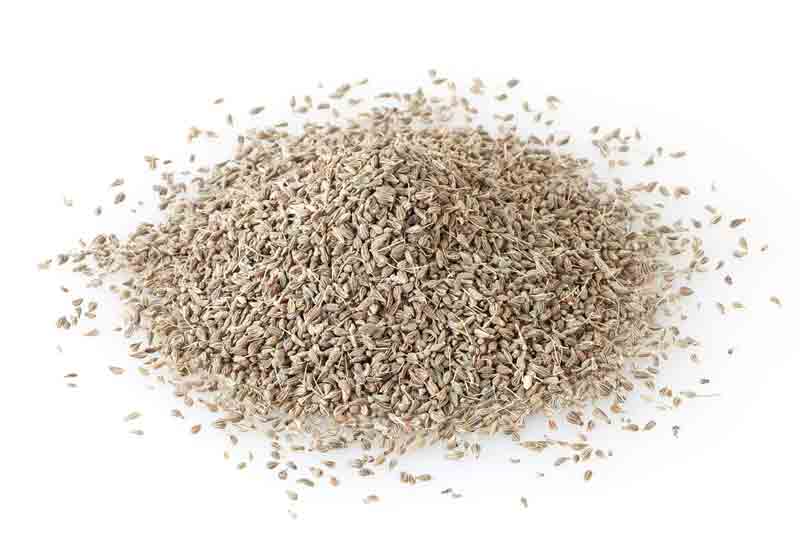Quick Facts
Botanical Name: Pimpinella anisum
Family Name: Apiaceae
Common Name: Aniseed
Part Used: Seed
Specific Gravity: 0.980-0.990 @ 20C
Optical Rotation: 80 to - l05 Degree @ 20C
Refractive Index: 1.52-I.559 @ 20C
Blends Well With: Cardamom, Caraway, Cedar wood, Coriander
Uses: Medicinally, the essential oil of anise is used as an aromatic carminative and as an ingredient in cough syrup and in gripe water preparation.
This oil is found to be antiseptic, antispasmodic and anti rheumatic and anti epileptic.
Countries where it's found
Native to the Mediterranean region, anise is an herb cultivated extensively Central, South, South-East Asia and European countries.
Harvesting information
This is a seasonal herb generally in the plains it grows is rainy weather, in mountains if is grown in summers, 25 Degrees is the optimal temperature for growing anise, new plant start producing first seeds in about 6 months and then every 6 months we can harvest the seeds from the plant, the age of this plant is 5 years approximately.
History of the Plant
The use of the anise plant as a medicine dates back to the Roman age. The Roman used the plant for its spice flavor and liquorice taste. The European used the seed as bait for mice, while the seed oil was used as pigeon poison. In addition, the plant is one of the world's oldest herbs to be recorded.
Extraction Process
The essential oil of anise is extracted through steam distillation of the plants dried fruits. The oil is thin and clear with Anethol as its primary constituent, which is the most powerful flavor component of the oil. The other constituents include alpha pinene, beta pinene, camphene, and safrol. Anise oil has a long history of being used as medicine and spice.

Commonly know Benefits
Antiseptic: Anise oil has anti-septic properties and offers would effective protection against infections. This helps in faster recovery of the wound.
Digestive: Anise essential oil promotes proper digestion. Age old practices include chewing anise seeds or taking desserts with anise or drinking a glass of water with a few drops of anise oil to support digestion especially after a heavy meal.
Anti rheumatic: The oil relieves pain from cramps, muscle pains and arthritis and rheumatism. The oil stimulates blood circulation thus reduces the pain in the affected area.
Carminative: Anise oil relieves stomach disorders by clearing the gas. Gas is considered a serious ailment and is known to causeindigestion, stomachaches, muscular cramps, chest pain, hypertension, heaviness and even hair loss. Anise oil promotes digestion and removes the gas.
Anti Epileptic: Two of the most important properties of anise oil are the anti-epileptic and anti-hysteric properties. The oil has sedative and narcotic effects and lowers down respiration, circulation and nervous response to calm down epileptic attacks.
Antispasmodic: Anise oil is a well known relaxant relaxing ailments such as cramps, coughs, convulsions, blood vessel spasms, muscle spasms, chest aches, stomach aches, and respiratory tract spasms.
Insecticide: The essential oil of anise is toxic to smaller animals and insects. As mentioned above, anise was used a mice bait and pigeon poison. The oil can be used with fumigants, sprays and a vaporizer.
Additional Benefits: Anise essential oil is used in perfumery, toilet articles, soaps, perfume sachets, mouth washes and other dental preparations. Anise seeds are used as a flavoring agent in confectioneries, food, liquor and beverages.
The other benefits of the oil include its use as a stimulant, vermifuge, sedative, expectorant, decongestant, and aperient. The oil is also used in the treatment of colic, pectoral affections and flatulence. Anise oil should not be given to children in heavy dosage, since its narcotic effects slows down respiration and circulation.





